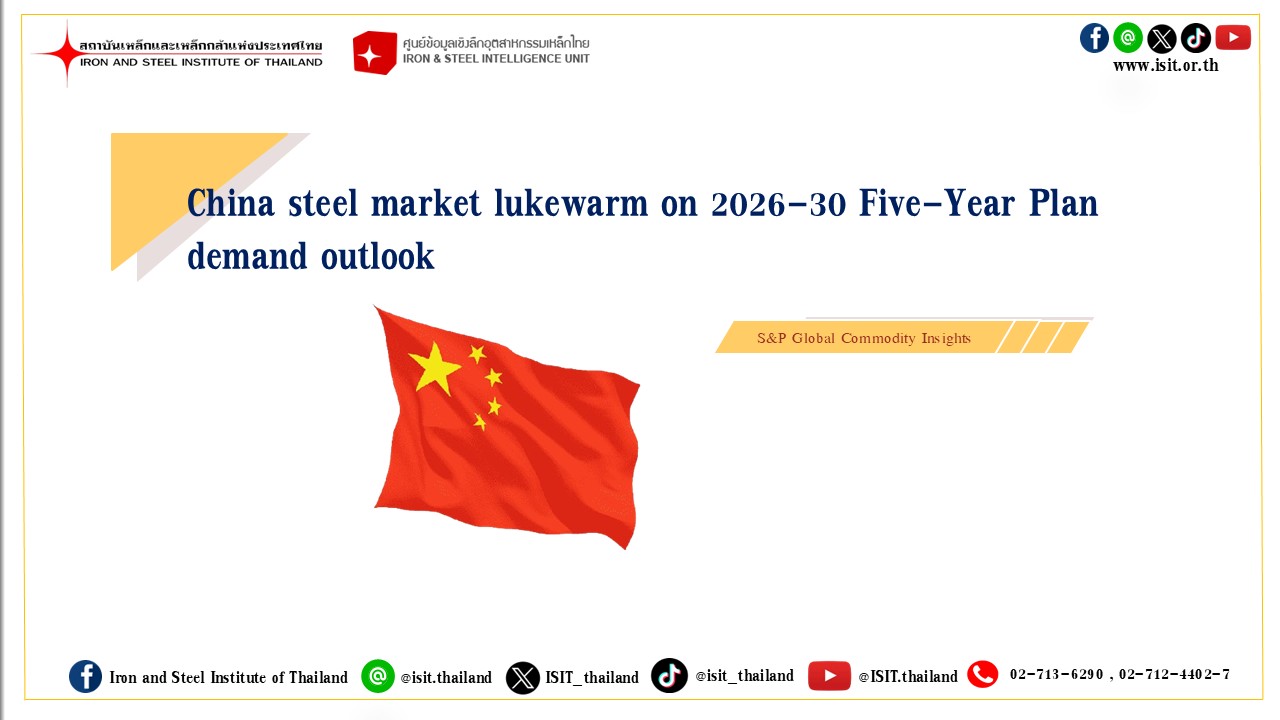
China’s steel market Oct. 24 displayed a lukewarm reaction to the newly unveiled 15th Five-Year Plan for 2026-30, with domestic market participants expressing concerns that the outlined development priorities may not be sufficient to drive substantial steel demand in the years ahead.
Steel futures on the Shanghai Futures Exchange declined day over day after China published its economic and social development blueprint Oct. 23.
The most actively traded rebar and hot-rolled coil January contracts on the Shanghai Futures Exchange closed at Yuan 3,046/mt ($428/mt) and Yuan 3,250/mt on Oct. 24, down 0.8% and 0.2%, respectively, from Oct. 23.
The plan sets forth key economic and social development objectives, such as sustaining economic growth within a reasonable range, boosting household consumption, advancing technological self-reliance and achieving carbon peak targets as scheduled.
“Many of the plan’s priorities [are seen] as extensions of existing policies rather than new initiatives,” said a China-based mill source. “Market consensus suggests that steel demand across the property, infrastructure and manufacturing sectors is unlikely to see substantial growth through at least 2026.”
The 15th Five-Year Plan targets urban renewal initiatives within the infrastructure sector.
Zhen Shanjie, director of the National Development and Reform Commission, said during an Oct. 24 press conference on 15th Five-Year Plan that China plans to build and renovate over 700,000 km of underground pipeline networks over 2026-30, requiring new investment of more than Yuan 5 trillion.
However, according to data from the Ministry of Housing and Urban-Rural Development, China completed 175,000 km of underground network construction and renovation in 2024, with over 100,000 km projected for 2025.
“China’s urbanization has almost been completed, and it is difficult to stimulate traditional infrastructure like bridge and road construction again,” a trading source said. “The steel intensity of urban renewal should be much lower than that of traditional infrastructure.”